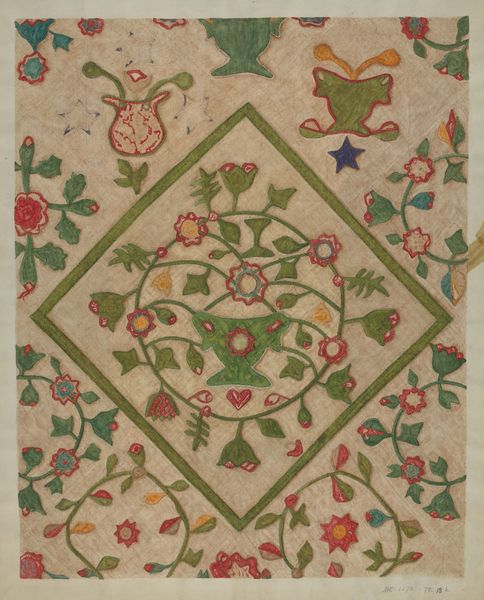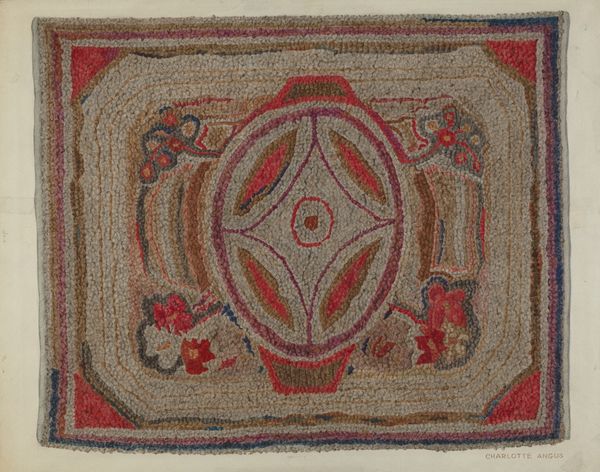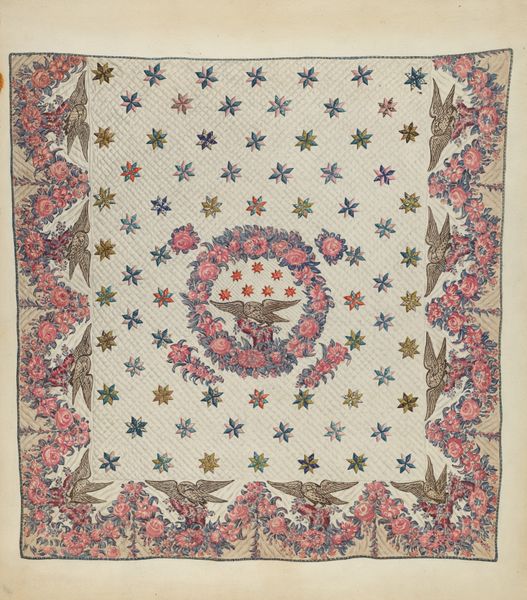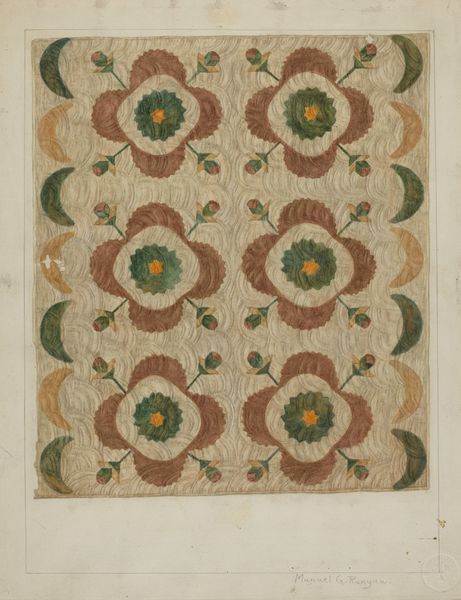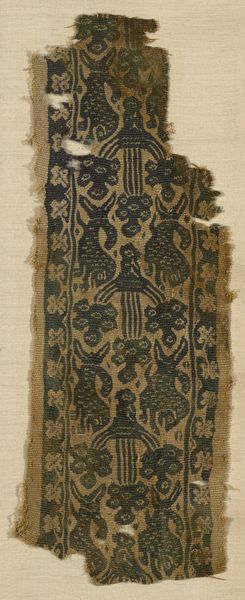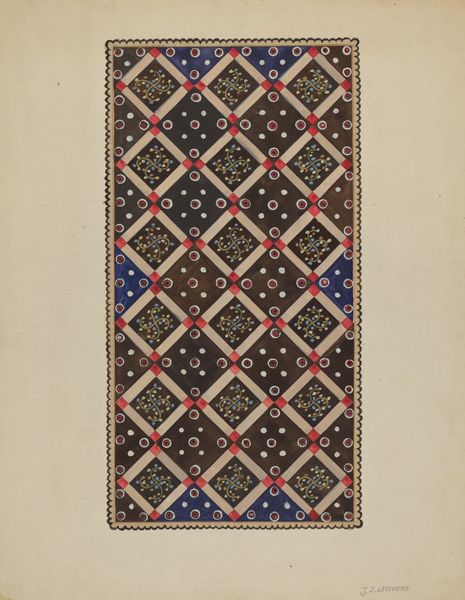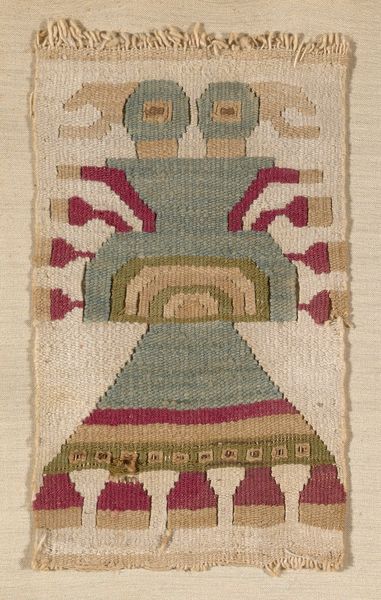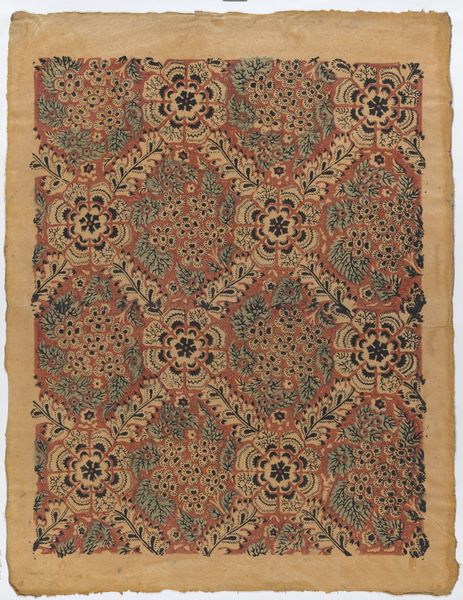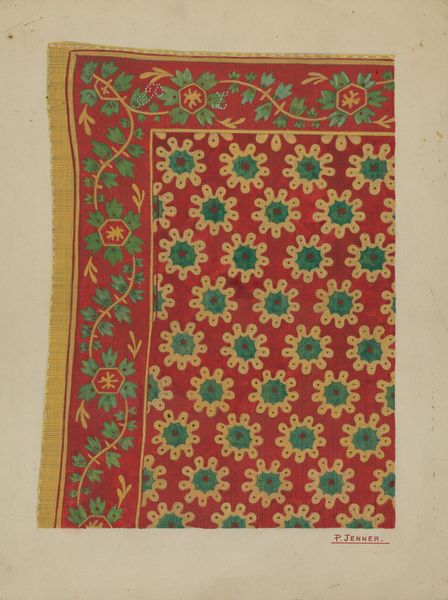
textile
#
folk-art
#
water colours
#
textile
#
stoneware
#
coloured pencil
#
folk-art
#
imprinted textile
#
watercolor
Dimensions: overall: 40.5 x 30.6 cm (15 15/16 x 12 1/16 in.) Original IAD Object: 25" wide; 65 3/4" long
Copyright: National Gallery of Art: CC0 1.0
Editor: Here we have Orville A. Carroll’s "Shaker Tufted Wool Rug," created around 1938. The use of wool gives it such a tactile presence, and I'm immediately drawn to the symmetry of the piece. What do you see in this work? Curator: As a materialist, my focus immediately goes to the labor embedded within. This isn't simply about aesthetic appreciation, but the process of production itself. Who was Orville Carroll, and what was their relationship to the Shaker community? The “tufted wool” aspect suggests a deliberate technique. How does the rug’s construction connect with or diverge from standard Shaker practices known for austerity? Editor: That’s interesting. I hadn't considered the labor aspect so directly. Is it significant that it is labelled a ‘rug’ - is that different than calling it ‘textile art’? Curator: Precisely. Is "rug" merely a functional descriptor, or does it hint at the commodification of Shaker craft? We must examine the textile within its economic context: Who would buy this rug? What socioeconomic factors shaped its creation and its eventual use or display? I would think that this work blends utility and decoration, and examining that tension gets to something interesting about production. Editor: So, instead of just seeing a symmetrical pattern, you're urging us to consider the social and economic forces that shaped its creation and potential consumption? Curator: Exactly. Even the "folk-art" aspect mentioned in the metadata… We have to ask, who gets to define "folk-art" and for what purpose? Such labeling inevitably impacts both the understanding and value assigned to this object, as it also touches upon production, consumption and, of course, display. Editor: This makes me rethink how I approach art; not just admiring the aesthetics but digging into its background and the story of how it came to be. Thank you. Curator: Likewise, the process-oriented examination illuminates dimensions that traditional art history frequently overlooks.
Comments
No comments
Be the first to comment and join the conversation on the ultimate creative platform.
